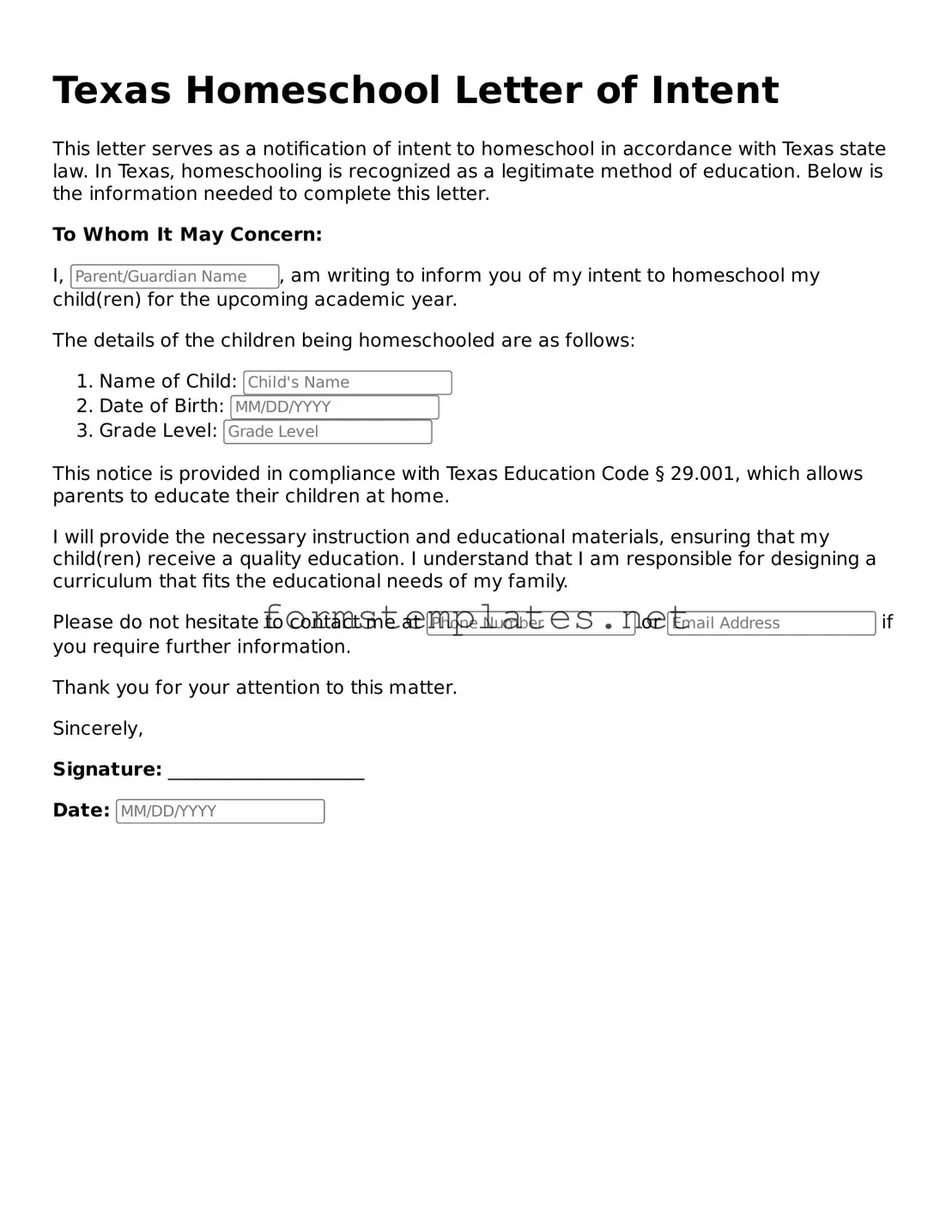Attorney-Approved Texas Homeschool Letter of Intent Template
The Texas Homeschool Letter of Intent form is a document that parents must submit to officially notify the state of their decision to homeschool their children. This form is essential for families seeking to educate their children at home, as it establishes their commitment to providing a structured learning environment. Understanding how to properly complete and submit this form is crucial for a smooth homeschooling experience in Texas.
Open Editor Now
